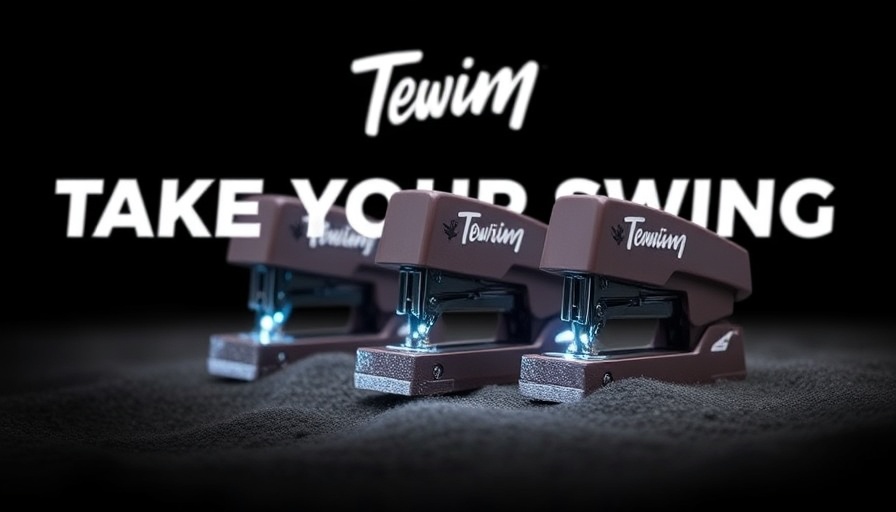
Revitalizing a Classic: Swingline's Innovative Approach
In an era where digital documents are the norm, the iconic Swingline stapler faces a unique set of challenges. Fewer consumers are jolting to offices, meaning less usage of these essential tools, leading to a sustained decline in stapler sales. However, Swingline is taking the bull by the horns with the "Take Your Swing" campaign, transforming how they connect with consumers and industries alike.
Shifting Away from the Corporate Landscape
Swingline's strategy marks a significant pivot from its long-held corporate market focus to an embracing of expansive sectors, such as healthcare, hospitality, and education. Matt Smith, the VP of marketing at Acco Brands, which owns Swingline, outlines this bold move. By targeting new users outside the boundaries of traditional office environments, Swingline is capturing a more diverse demographic that requires versatile stapling solutions.
Crafting Experiences that Resonate
The core of Swingline's new strategy lies not just in broadening its market but in refining what they offer. The brand is designing smaller, stylish staplers that appeal to home-users and those seeking aesthetically pleasing office supplies. As remote work becomes more entrenched, Swingline's focus on design-forward products ensures that they remain relevant in a market filled with options. This is a smart approach, as it caters to a growing preference for home-inspired workspaces.
The Take Your Swing Campaign: Dreams and Engagement
The "Take Your Swing" campaign taps into aspirations and chances that consumers are willing to take. It is not merely about selling staplers; it's about inspiring individuals. The campaign features relatable personas like accountants and restaurant owners—people whose daily lives can be enhanced by the reliable, functional elegance of a Swingline stapler. With a fresh focus on end-users, this campaign distinguishes Swingline from competitors who have not adapted to changing consumer habits.
A Noteworthy Comeback: Product Innovations and Placement
The recent revival of Swingline’s classic Cub stapler—now with enhanced capacity and trendy colors—is a testament to the brand’s commitment to resonate with modern customers. It’s already seeing success in retail, notably at Target, where it has secured the top spot in its category. Such competitive positioning showcases how product innovations can drive customer acquisition while elevating branding efforts.
Harnessing Retail Media Networks for Growth
To further support their growth, Swingline is strategically utilizing retail media networks, such as Target's Roundel. These platforms allow Swingline to remind customers of their needs—essentially creating demand generation by placing products into shoppers' consideration. With an emphasis on building comprehensive marketing strategies, they effectively approach customer touchpoints across different channels.
The Bottom Line: Forward Thinking in Challenging Times
Swingline’s reimagined tactics reveal a keen understanding of market dynamics and the importance of adaptability. By focusing on customer acquisition strategies that prioritize individual users alongside solid industry positioning, the brand is not only combating decline but setting the stage for a resurgence. With initiatives rooted in fun and motivation, Swingline continues to be a staple—not just in offices but in people’s lives, one stapler at a time.
Want to see how innovative marketing can work for your business? Implement these insights from Swingline's revitalized strategies into your own operations. It's time to take your swing at growth!
 Add Row
Add Row  Add
Add 



Write A Comment